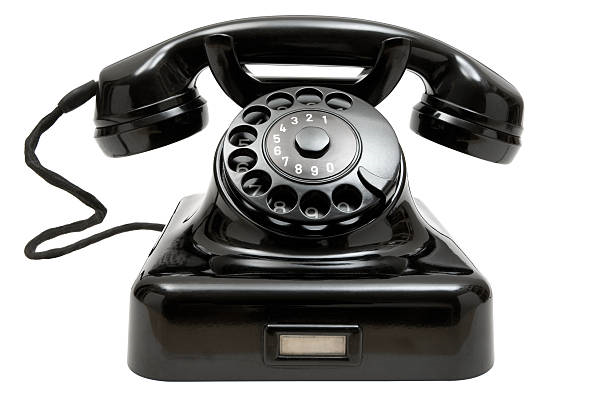About Us

A Stroke-Free Oregon
The Oregon Stroke Network (OSN) is a nonprofit organization comprised of a variety of healthcare professionals in many practice settings across the state who care for patients diagnosed with stroke. Operational since 2006, OSN is committed to bringing together the resources to build a coordinated stroke care network across Oregon.
Each of us have individual strengths and expertise that can make a difference, not only in survival but in quality of life of stroke patients. Please consider joining us in the effort to protect all Oregonians from the effects of cerebrovascular disease.
OUR MISSION:
To promote the highest standard of stroke care through education and collaboration with all agencies, organizations and stroke care providers across the state with the goal to decrease the burden of the stroke in Oregon.
OREGON STROKE NETWORK IS FOR EVERYONE
OSN is committed to serving stroke survivors and their caregivers and families by sharing resources in order to promote quality of life. OSN is committed to providing public education to help prevent and treat stroke. OSN guides the public toward helpful and credible resources in their own communities and nationally.
Survivors, Caregivers, Family – OSN provides information and shares regional and national resources that help survivors and their caregivers and family with coping with stroke. Information on emotional changes such as depression, support groups, financial and social services and many other resources are provided. A variety of learning styles and needs are considered with listings of books, magazines, newsletters, websites, social media, and smart phone applications (apps), stroke support groups, and social services.
OSN also provides the public with information about current legislation being considered which can improve the quality of life of stroke survivors, caregivers and families. Additionally, information on how one can get involved in stroke research trials is provided.

Find Stroke Care Near Me – OSN provides a map of Oregon divided by counties. A list of resources located in each county is supplied. These resources include support groups, neurologist and physiatrist groups, physical therapy, hospitals, rehabilitation centers, information on driving, and other resources. Each of these services possess expertise that can make a difference, not only for survival, but for maximizing the quality of life for stroke survivors and their families. Remember to call 911 for the symptoms of stroke – BE FAST
OREGON STROKE NETWORK IS FOR HEALTCARE PROFESSIONALS
OSN compiles resources from across the state to share with its members. These resources help with the day to day care of stroke patients and the design of stroke programs within medical centers.
Professional Resources - OSN supports health care professionals by sharing current best practice, protocols, policies, algorithms, pathways, landmark articles and other stroke related health care tools.
Annual OSN CME/CEU Conference - OSN hosts the annual state-wide, professional stroke symposium at rotating venues throughout the state. This conference is designed to enhance multidisciplinary stroke knowledge and the care of stroke patients across the continuum of care. The target audience are emergency medical system (EMS) providers, emergency department personnel, physicians, nurses, stroke coordinators, rehabilitation therapists, managers, and administrators. The content provided meets the needs of the baseline novice to the expert level with presentations addressing stroke care in the pre-hospital, emergent, acute, and rehabilitation settings.
Professional Directory for Networking – OSN provides a professional member directory which can only be accessed by current members. This provides a unique opportunity for networking and collaboration among stroke providers within the state of Oregon
Upcoming Events – OSN provides a central posting for stroke-related CME and CEU educational activities specific to stroke and neurological care within Oregon. Keep up to date on upcoming professional conferences by checking this site. Examples of postings include the Emergency Neurological Life Support (ENLS) course, Stroke Certified Registered Nurse (SCRN) preparation courses, and other stroke and neurological education offerings.
NEWS - OSN provides the latest stroke news and scientific updates. Updates on regional stroke research trials are provided.
SOME FREQUENTLY ASKED QUESTIONS
Review more FAQs on the OSN site at FREQUENTLY ASKED QUESTIONS/BASIC STROKE FACTS
WHAT IS A STROKE?
A stroke is a “brain attack." There are two primary types of stroke: (1) ischemic stroke, which occurs due to an obstruction within a blood vessel of the brain; and (2) hemorrhagic stroke, which occurs when a blood vessel in the brain ruptures. Ischemic strokes are most common and account for 87% of all strokes.
Both types of stroke deprives brain cells of oxygen and nutrients and these cells begin to die very rapidly. The signs and symptoms of a stroke vary depending on which area of the brain is affected.
Remember the acronym BE FAST to recognize a stroke. Recognizing these symptoms helps you know when to call 9-1-1 for medical help.
B – Balance loss
E – Eyesight changes
F – Face drooping
A – Arm weakness
S – Speech difficulty
T – Time to call 9-1-1
CAN STROKE BE TREATED?
Stroke is a medical emergency! CALL 9-1-1 if an individual has one or more symptoms of stroke. The person should be brought to the hospital by ambulance immediately.
There are several effective treatments for stroke. However, these treatments are not effective if delayed. It is essential the patient is treated rapidly at, or in consultation with, an experienced medical center such as a Certified Stroke Center.
Ischemic stroke can be treated with clot busting medication or thrombectomy (a procedure where the clot is removed). These are time sensitive treatments and it is imperative that the person experiencing stroke symptoms get emergent treatment quickly!
Hemorrhagic stroke is treated with medication to reduce bleeding and lower blood pressure if it is high. Surgery may also be needed.
Oregon is a large geographic area with many types of communities from urban highly populated cities to less densely populated rural communities. Providing high quality, rapid and aggressive stroke care to this diverse population presents a challenge. The Oregon Stroke Network is committed to overcoming this challenge through collaboration and education with health systems across the state.
See the MAP on this site and click on a county to find stroke care near you.
Long term treatment of stroke may include medications and lifestyle changes. Rehabilitation with speech therapists, occupational therapists, and/or physical therapists may be recommended. In some cases a neuropsychologist may be recommended to help cope with emotional changes that may occur with stroke.
WHY DO PEOPLE HAVE A STROKE?
Stroke may be due to a number of risk factors. Hypertension (high blood pressure) is the leading cause of both types of stroke. Diabetes, high cholesterol, obesity, coronary artery disease, atrial fibrillation, tobacco, cocaine and methamphetamine, excessive alcohol, and sleep apnea are all conditions that place individuals at increased risk of developing a stroke.
People who have any, or a combination, of these risk factors are at increased risk of having a stroke or TIA (transient ischemic attack). A TIA is caused by a clot that is temporary and is often a “warning” of a possible impending stroke. People who experience a TIA do not have lasting symptoms.
A TIA is a medical emergency! If a person experiences a TIA they should be seen in the emergency room, even if the symptoms resolve.

